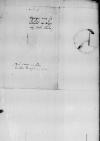Letter #5824
Bona Sforza to Ioannes DANTISCUSCracow (Kraków), 1524-05-16
| received Naples, [1524]-06-27 Manuscript sources:
| ||||
Text & apparatus & commentary Plain text Text & commentary Text & apparatus
Egregio viro
Nobilis et egregie vir sincere nobis dilecte.
Descripsimus omnia [...] paper damaged⌈[...][...] paper damaged⌉ma magnifico Ludovico secretario nostro, collegae tuo, quibus o paper damaged⌈[quibus o]quibus o paper damaged⌉pus foret in nostris istic obeundis negotiis [...] paper damaged⌈[...][...] paper damaged⌉ ac diligenter assistat S(trenui)tas or S(inceri)tas⌈S(trenui)tasS(trenui)tas or S(inceri)tas⌉ Tua. Et nunc [...] paper damaged⌈[...][...] paper damaged⌉ non est, quod magis vellemus, quam quod S(trenui)tates or S(inceri)tates⌈S(trenui)tatesS(trenui)tates or S(inceri)tates⌉ Vestrae se istic gerant viriliter et prudenter in omnibus actionibus, rebelles et malos, ac factiosos puniatis et coerceatis, ne aliis sint in scandalum, cum rigore iustitiae et bonos ac oboedientes benevolentia et amore prosequimini et sic gratiam nostram merebimini.
Et reliqua referet nobis Ludovicus secretarius noster.
Bene valeatis.
Dat(ae) or Dat(um)⌈Dat(ae)Dat(ae) or Dat(um)⌉ ult XVI Mai 1524.
Ad mandatum serenissimae


 BCz, 1601, p. 540
BCz, 1601, p. 540